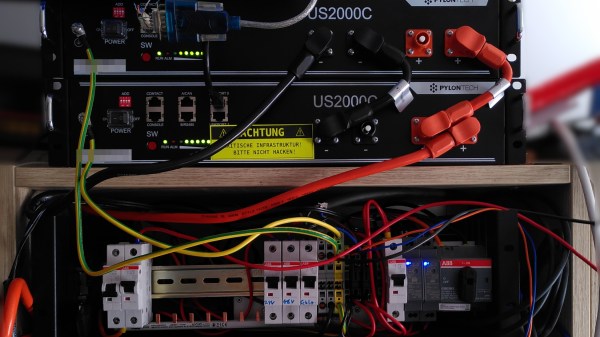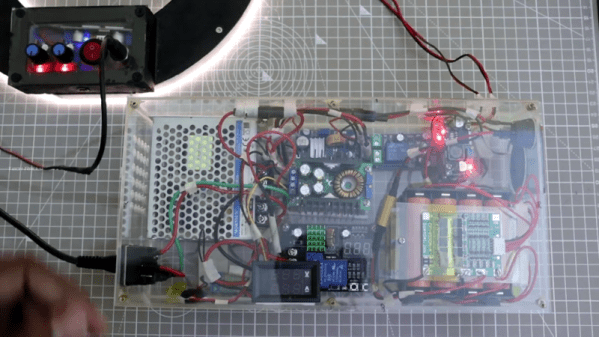When you have a whole stack of devices and appliances that all have an AC to DC adapter and which you’d like to put on an uninterruptable power supply (UPS), you could do the obvious thing and get an off-the-shelf UPS with myriad AC outputs. In the case of a 19″ rack this means wrangling a power strip or two and any combination of differently sized AC/DC adapters into the rack, with questionable efficiency and waste heat dumped into the rack. This is where a DC-only UPS like [Maciej Grela]’s Second Life UPS Mark II provides an interesting alternative.
At its core it’s a pretty simple concept: A single 400Watt power supply handles the AC/DC conversion from mains to 24 VDC, which feeds the battery charger as well as the outputs. These outputs include 5 VDC, 12 VDC and Vrail, with the latter being either the output from the PSU, or the battery voltage. In case of AC power failure, an LT4416 dual power path controller handles the switch-over from the PSU output to the internal batteries. In the article, [Maciej] covers how the buck modules for the 12 & 5 VDC rails were sized, along with the conversion of an old rack-mounted network switch into a UPS. Continue reading “Second Life UPS Mark II: A UPS For Low-Voltage DC Applications”












